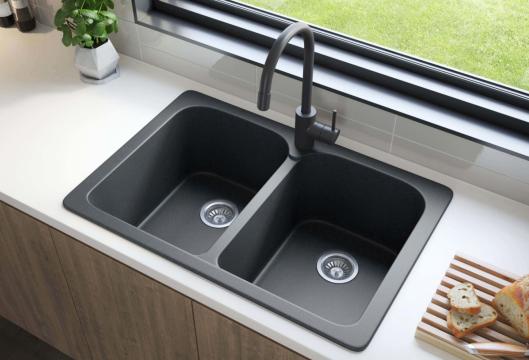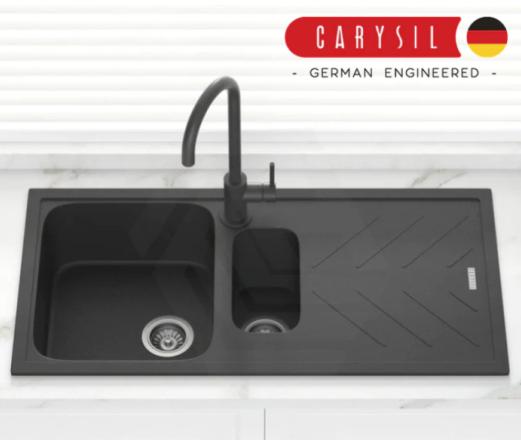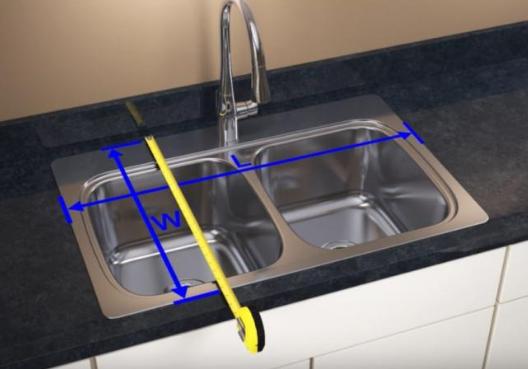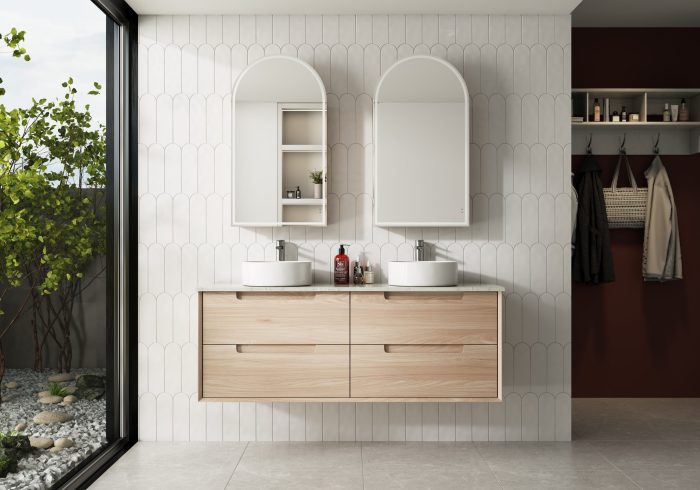The kitchen sink is one if not the most frequently used and versatile parts of a home. From small kitchen sinks to big kitchen sink designs, size is the most crucial factor to consider when selecting your future kitchen sink, since it will have a lasting impact on your daily life. This blog will tell you what you need to know about the size of kitchen sinks and how to measure different types of kitchen sinks.

Why Is Kitchen Sink Size Important?
Having the wrong kitchen sink sizes can increase the chances of back pain because you might have to bend more to clean your dishes in the sink. Besides that, you may get broken dishes due to the fact that your sink becomes overcrowded after washing a few dishes.
Choosing the right sink size will help you prevent back and neck pain, keep the dishes from breaking, and make the most of the space you have. Besides that, kitchen sink cut out size is also important for house sellers. The kitchen is an important room in a house, so making changes to it can add significant value. Even though it’s a small detail, buyers will probably look into the kitchen sink dimensions prior to making an offer.
How Kitchen Sinks Are Measured?
Kitchen sinks are typically measured by their overall dimensions, including the length, width, and depth of the basin(s). Here are the steps for measuring a kitchen sink.
- Empty your kitchen base cabinet so you can measure the space with a clean surface.
- Make sure that your sink is free of dishes and clean.
- Start by measuring the edge of the kitchen countertop with your measuring tape or a ruler. If you have an undermount sink, measure from the counter opening’s edge.
- Place the edge of your tape measure on the left edge of the sink and stretch it across to the right edge to get the length of your sink.
- Place the tape measure at the back edge of the sink (closest to the kitchen faucet) and stretch it across the sink basin to the front edge to get the sink’s width.
- Put your level or straightedge ruler across the top of your sink. Use a tape measure to determine the distance from the deepest portion of your sink’s basin to the lowest edge of the ruler to get the sink’s depth.
- Take all of your measurements twice to make sure they are correct.
- Measure the distance between the center of the left faucet hole to the center of the right faucet hole to note the faucet holes.

When shopping for a kitchen sink, it’s important to compare the measurements to the size of your existing sink or the cabinet in which you plan to install the sink. You should also consider the number of basins and the configuration of the sink (e.g., single bowl, double bowl, triple bowl) to ensure that it meets your needs.
Common Kitchen Sink Sizes of Different Types
In general, knowing the common kitchen sink size might help you choose the perfect size for your needs. To get a perfect-sized kitchen sink, you will also need to know the type of your sink first. Besides, single bowl kitchen sinks are sure to have their specific single basin kitchen sink dimensions different from double bowls. Generally, there are three types of kitchen sinks: undermount, drop-in, and farmhouse sinks. Let’s see them below:
- Undermount sinks are sinks that go below the countertop. The rims of this type of sink are covered by the countertop, so no part of the sink rests on the counter.
- Drop-in is also known as top-mount or self-rim sinks. The rim of these sinks lies on top of the counter’s surface.
- Farmhouse sinks, also known as apron-front sinks, feature a front that is visible and a deep bowl. There are no cabinets covering the basin.

For the common size of these types, you can refer to the following standard kitchen sink size in Australia:
- Undermount:
Single bowl: 25-30 inches in length, 18-20 inches in width, and 8-10 inches in depth.
Double bowl: 30-36 inches in length, 18-20 inches in width, and 8-10 inches in depth.
- Drop-in/Top-mount:
Single bowl: 25-33 inches in length, 22 inches in width, and 8-10 inches in depth.
Double bowl: 33-44 inches in length, 22 inches in width, and 8-10 inches in depth.
- Farmhouse:
Single bowl: 30-33 inches in length, 20-22 inches in width, and 8-10 inches in depth.
Double bowl: 33-36 inches in length, 20-22 inches in width, and 8-10 inches in depth.
It’s important to note that kitchen sink sizes can vary depending on the manufacturer and specific model. It’s always best to check the product specifications before purchasing a sink to ensure that it will fit properly in your space.
Conclusion
If you want to design a perfect home, you will want to choose the correct size of kitchen sink no matter it’s a single basin or double bowl sink. Choosing the right size kitchen sink offers some benefits, such as preventing back and neck pain, maximizing available space, and preventing dishes from breaking. And you may need to replace your sink if it is installed with the wrong size. Check MyHomeware’s various single bowl and double bowls kitchen sinks to spark up your kitchen life today!
FAQ about Size of Kitchen Sink
You can buy kitchen sinks from many big box stores such as Home Depot and Lowes which have plenty of different options for sinks at various price points. However, if you’re looking for some truly unique options or top-notch craftsmanship, then you might check out upper-end local kitchen supply stores or branded manufacturer shops like MyHomeware.
The size of the sink you can buy will depend on several factors like the size of the sink cabinet and sink style, your needs, countertop space, and plumbing requirement. Once you have determined your requirements for the sink, you can look for sinks that meet those requirements. If you need to replace a sink, it’s important to make sure that your new kitchen sink has the same bowl size as your old one. If not, you might have to replace the cabinet as well.
A deeper and larger kitchen sink can offer several advantages is very helpful and beneficial in the following aspects:
1. More space for larger items
2. Reduce splashing
3. Easier to wash dishes
4. Accommodate more dishes
5. Better for soaking
6. Improve hygiene





